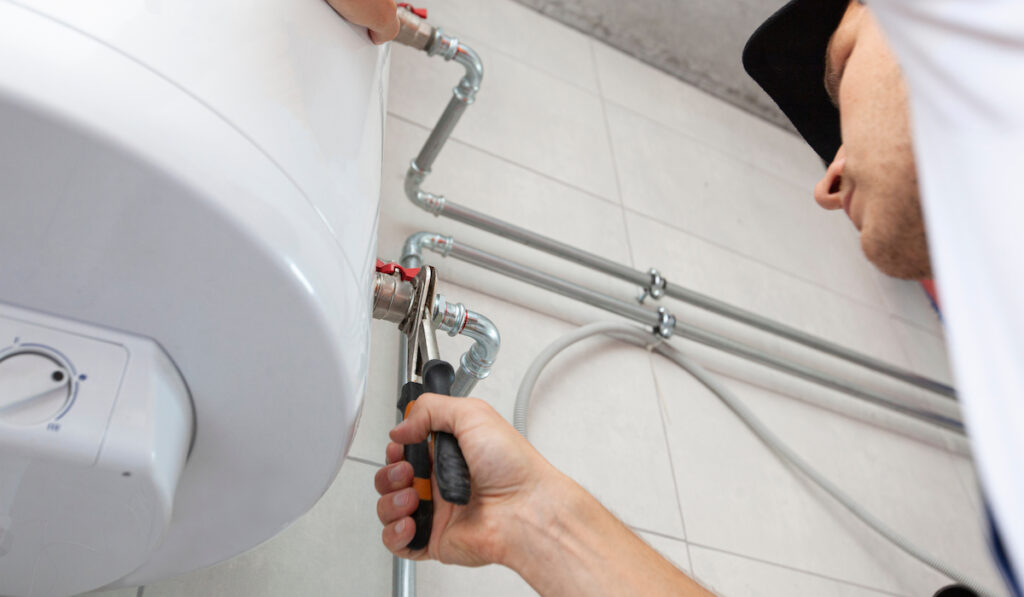Important Care Techniques for Your Home's Hot Water SystemImportant Care Techniques for Your Home's Hot Water System
Important Care Techniques for Your Home's Hot Water SystemImportant Care Techniques for Your Home's Hot Water System
Blog Article
What are your insights and beliefs on How to Maintain Your Water Heater & Prolong its Life?

Hot water is essential for everyday comfort, whether it's for a revitalizing shower or cleaning dishes. To ensure your warm water system runs successfully and lasts longer, routine maintenance is vital. This write-up provides useful ideas and insights on just how to preserve your home's warm water system to stay clear of disruptions and costly repairs.
Introduction
Maintaining your home's hot water system might seem overwhelming, but with a few basic actions, you can guarantee it operates smoothly for many years ahead. This guide covers everything from recognizing your hot water system to DIY maintenance pointers and recognizing when to call specialist aid.
Relevance of Preserving Your Warm Water System
Routine maintenance not only extends the life-span of your warm water system yet additionally ensures it runs successfully. Ignoring maintenance can result in decreased performance, higher energy bills, and also early failing of the system.
Indications Your Warm Water System Demands Upkeep
Understanding when your hot water system needs interest can prevent major concerns. Look out for indicators such as inconsistent water temperature level, weird noises from the heating system, or corroded water.
Purging the Water Heater
Flushing your hot water heater eliminates sediment build-up, enhancing efficiency and prolonging its life.
Checking and Changing Anode Rods
Anode rods prevent deterioration inside the storage tank. Examining and changing them when worn is critical.
Complicated Problems Requiring Professional Help
Instances include significant leaks, electric issues, or if your water heater is consistently underperforming.
Regular Professional Upkeep Perks
Specialist upkeep can include extensive inspections, tune-ups, and making certain compliance with safety requirements.
Inspecting and Changing Temperature Settings
Changing the temperature setups guarantees optimum performance and safety and security.
Do It Yourself Tips for Maintenance
You can do several upkeep tasks on your own to maintain your hot water system in leading problem.
Checking for Leakages
Routinely inspect pipelines and connections for leakages, as these can cause water damage and greater expenses.
Understanding Your Warm Water System
Prior to diving into upkeep jobs, it's helpful to recognize the fundamental parts of your warm water system. Typically, this consists of the hot water heater itself, pipes, anode poles, and temperature controls.
Month-to-month Maintenance Tasks
Routine month-to-month checks can aid capture minor problems prior to they escalate.
Checking Stress Alleviation Valves
Evaluating the stress safety valve ensures it works correctly and stops too much pressure accumulation.
Shielding Pipelines
Insulating warm water pipelines decreases warm loss and can conserve power.
When to Call a Professional
While do it yourself maintenance is useful, some problems require expert experience.
Conclusion
Routine upkeep of your home's warm water system is essential for efficiency, durability, and expense savings. By complying with these ideas and recognizing when to look for professional help, you can guarantee a dependable supply of hot water without unforeseen interruptions.
How to Maintain an Instant Hot Water Heater
Before tinkering with your hot water heater, make sure that it’s not powered on. You also have to turn off the main circuit breaker and shut off the main gas line to prevent accidents. Also turn off the water valves connected to your unit to prevent water from flowing into and out of the appliance. 2. When you’re done, you have to detach the purge valves’ caps. These look like the letter “T” and are situated on either side of the water valves. Doing so will release any pressure that has accumulated inside the valves while at the same time avoid hot water from shooting out and burning your skin. 3. When the purge valves’ caps are removed, you have to connect your hosing lines to the valves. Your unit should have come with three hoses but if it didn’t, you can purchase these things from any hardware or home repair shops. You can also get them from retail stores that sell water heating systems. Read the user’s manual and follow it to complete this task properly. When the hosing lines are connected, open the purge port’s valves. 4. You should never use harsh chemical cleaners or solutions when cleaning your unit. Make use of white vinegar instead. It should be undiluted and you’ll probably use about 2 gallons. 5. Now flush your water heater. This task should probably take about 40 minutes. We can’t give you specific directions for this because the procedure is carried out depending on the type, model and brand of your heater. With that being said, refer to the user’s manual. 6. When you’re done draining the unit, you have to turn off the purge port valves again. Remove the hosing lines that you earlier installed on each of the water valves. Put the valve caps (purge port) back in their respective places and be very careful so as not to damage the rubber discs that are found inside these caps. 7. Now that everything’s back in place, check your user’s manual again to find out how to reactivate your water heating system. 8. Once it is working, turn one of your hot water faucets on just to let air pass through the heater’s water supply pipes. Leave the tap on until water flows smoothly out of it. https://www.orrplumbing.com/blog/2014/september/how-to-maintain-an-instant-hot-water-heater/

I'm just very serious about How to Maintain Your Water Heater & Prolong its Life and I'm hoping you enjoyed reading the entire entry. Do you know about somebody who is occupied with the subject? Be sure promote it. Many thanks for your time invested reading it.
Estimate Free Report this page